#Josef Fischer
Explore tagged Tumblr posts
Text
Parigi-Roubaix: viaggio nell'inferno del nord
La Parigi-Roubaix è una gara in linea di ciclismo su strada che ogni anno viene disputata la seconda domenica d’aprile. Nota come la “regina delle classiche” per la sua importanza, la corsa di Pasqua, meglio nota come “Pascale” o l’inferno del Nord per le avversità a cui sono sottoposti i corridori. La prima edizione risale al 1896 ed è tutt’ora una delle più longeve classiche in attività.…

View On WordPress
#ciclismo su strada#corsa di Pasqua#gara in linea#inferno del Nord#Josef Fischer#Le Velò#Louis Minart#Mathieu Cordang#Maurice Garin#Maurice Perez#parco Barbieux#Parigi-Roubaix#Pascale#regina delle classiche#Roubaix#Theodore Vienne#velodromo
0 notes
Text
VA - Erstes Wiener Krandaubel Opening: Donauwalterinterpretationen (2023)
#va#various artists#compilation#album#matthäus bär#pü#adina camhy#bobby would#francesca centonze#conny frischauf#clemens denk#farbfelde#lukas könig#aras levnis seyhan#michael fischer#power#dj josef#katarina maria trenk#albert mayr#sundl#moya hoke#matija kac#die wutzlinge#afghanistan mon amour#sean derrick cooper marquardt#Bandcamp
2 notes
·
View notes
Text
“She is unfit for her position both as Empress and as wife”: Elisabeth and Dr. Seeburger

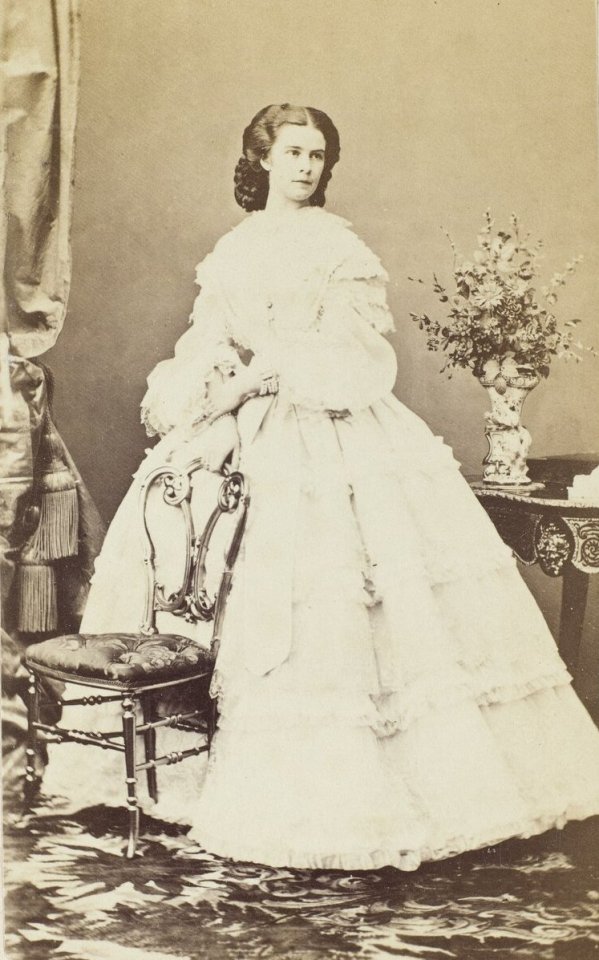
Left: Doctor Johann Seeburger, by Ludwig Angerer, c. 1860. Via the Royal Collection Trust. Right: Empress Elisabeth of Austria, by Ludwig Angerer, c. 1861. Via Wikimedia Commons.
I had this sitting on my drafts for months, yet I didn’t find any motivation to finish this post. That is, until the first teaser of Die Kaiserin season 2 dropped, featuring, among other things, a scene in which Elisabeth spits a doctor in the face. And while something as rude as this never happened, the young empress of Austria did have a troubled relationship with one doctor at the Habsburg court: Johann Seeburger. I don’t know if the doctor in the teaser is meant to be him, but given that he and Elisabeth ended up being borderline hostile towards each other, I wouldn’t be surprised if Seeburger was the inspiration (assuming the doctor is an actual character with lines and not a random physician that will get spit on the face for no reason). So without further ado, let’s look at what we know about Elisabeth and Seeburger’s relationship.
I couldn’t find information on Dr Johann Seeburger, only that he was born in 1800, and seems to have worked at court since at least the beginning of the reign of Franz Josef (probably earlier, since it was very difficult to access court). We don’t know what kind of relationship Elisabeth and Seeburger had when they met, as biographers don’t make any mention of it. He attended Elisabeth during her first pregnancy, and I think it’s safe to assume he also treated her during her second one. Seeburger wasn’t the only doctor consulted - Doctor Heinrich Fischer, the Wittelsbach’s personal physician, was also called for a second opinion.
Aunt Luise [Elisabeth’s mother]’s Doctor Fischer, in whom I have a great deal of confidence, has arrived here... [He was] delighted by Sisi’s blooming appearance and finds her whole condition very satisfactory. He and Seeburger say that the great moment will come at the end of February, at least the first days of March... (Praschl-Bichler, 2008)
Elisabeth probably felt more comfortable with Fischer, who had been her doctor back in Bavaria, than with Seeburger, so it’s not odd they called him for a second opinion.
It is not only until the Imperial family’s ill-fated Hungarian trip of 1857 that Sisi’s biographers mention Seeburger again - for in this trip, her first child tragically died.
The little archduchesses Sophie and Gisela arrived in Hungary on May 5 of 1857, a day after their parents, but they never joined them in the tour - the girls were to stay in Buda, where the Imperial couple could visit them during the short breaks of the packed tour schedule, which was meant to last two months. The visit started off well, but only a few days after their arrival, Gisela fell ill with fever.
Gisela’s fever was first attributed to teething, but the next day her sister Sophie also fell ill. Franz Josef and Sisi were meant to leave Buda and continue their journey through eastern Hungary, but the emperor postponed the journey for ten days as the girls continued to be sick. This did not mean that the parents were always next to their daughters, as historian Martina Winkelhofer notes, “the days that were now free were filled with further receptions and audiences. Only the evening festive events were cancelled.” (2022)
After three days Gisela got better, but Sophie showed no improvement. Dr Seeburger was among the physicians that were present attending the young archduchesses, but still Franz Josef called the pediatrician Josef-Michael Götz from Vienna. “The latter was not only the author of the manual Care and Treatment of Sick Children during the Early Phase of Life (1842), which is in the imperial court library, but had also studied the ‘course of the great epidemics (cholera, typhus, influenza) in children’.” (ibid, 2022)
Götz left a day after being summoned, but Baby Sophie only got worse. At this point the parents were feeling desperate: Franz Josef wrote to his mother Archduchess Sophie that the girl’s cries “tore his heart apart”, and added that “‘What Sisi and I are suffering, you can imagine!’” (Praschl-Bichler, 2008). Baby Sophie was diagnosed with typhus, and the pediatrician was recalled. After a hard night it seemed the child showed signs of being better, and it was believed she would recover. So on May 21, the Imperial couple was given the all-clear by the doctors to finally continue their tour.
Here is where things get a bit odd. Quoting Winkelhofer again (emphasis by me):
Elisabeth and Franz Joseph then set off from Buda to Jászberényi with a solemn entrance into the city. On the fourth day of the tour, however - as can be read in the travel protocol - there arrived “a telegraphic dispatch about the condition of Her Imperial Highness Archduchess Sophie from Buda, the contents of which distressed His Majesty to such an extent that Her Royal Highness’s departure was already scheduled for noon”. The telegram probably came from Sophie’s aja, and may have been sent without consulting the doctors because, as soon as the decision to leave was made, a report from the court physicians arrived: “His Majesty [had] decided to interrupt the sudden departure that had already begun”. (2022)
What happened? We can only speculate - whether the aya realized that Sophie hadn’t recovered before the doctors, whether the doctors’ report arrived before the girl’s health worsened. Whatever actually happened, those hours of delay were to result crucial: the next morning Sophie was in critical condition. The parents, who were in Debrecen at the moment, only arrived in Buda the following morning, where they found their child already at death’s door. That afternoon, on May 29, the two years-old Sophie died.
I went in detail on the last days of Baby Sophie because I think they’re crucial to understand the aftermath of her death. Having been away from her daughter during her final days was a great source of torment for Elisabeth, who blamed herself for leaving the child when they thought she was going to make it. Unsurprisingly, she also felt the physicians had failed in saving her daughter. According to her biographer Egon Conte Corti, the young empress tried to have Seeburger dismissed, but Archduchess Sophie’s intervention prevented it. (1936, p. 75)
I always feel that biographers focus too much on how grief made Elisabeth act “irrational” - to the point they ignore that she had a genuine reason to be upset at Dr Seeburger. Was she being fair? I don’t know, it was the 19th century, who knows if there was any doctor who could’ve cured Baby Sophie. I want to believe that all the doctors who treated her truly did as much as they could to help the girl. Corti claims that until the end Seeburger “was very crestfallen, but when pressed with questions he would only say that he had not given up hope.” (ibid, p. 73). But it was Seeburger and the medical staff who ultimately told Elisabeth and Franz Josef that it was safe to leave Sophie and continue the trip, and it was he who sent the report that prevented them from coming back earlier the 28th. Perhaps her animosity towards the doctor was unfair, but the way I see it, it was also understandable.
After this, the relationship between the empress and the court doctor became tense. Unlike her first two, Sisi’s third pregnancy and labor were very difficult. She wasn’t allowed to nurse Rudolf - which was the norm, but she had a large influx of milk that caused her a lot of pain. More concerning, she caught fever during the puerperium, but even though Laxemburg (where the Crown Prince had been born and the empress was recovering) was cooling, as it didn’t have heating, Seeburger didn’t order to move the empress to a different palace. Winkelhofer notes that the physician’s attitude is surprising, since there was a real danger of puerperal fever. Archduchess Sophie had to write (emphasis by me):
telegram after telegram to convince the Emperor and Seeburger that it was only the unhealthy air in Laxenburg that was causing Sisi’s fever attacks and that a speedy transfer of Sisi to my warm parlours in Schönbrunn [Sophie was staying in Ischl], well protected in a closed carriage during the warm midday hours, would certainly be advisable. Seeburger did not want to go along with this idea at first, but after the second attack of fever he said he would bring Sisi to Schönbrunn in the middle of this month; if only the bad weather did not throw a spanner in the works! (Praschl-Bichler, 2008; also in Winkelhofer, 2022)
Only months after Rudolf’s birth, Austria was at war with Sardinia. The war took a great toll on Sisi’s mental health, and she was visibly stressed. The court society found their empress disappointing: they wanted an icon of hope, a figurehead who would visit hospitals and attend public events to lift the spirits of the Viennese. But Elisabeth was only a twenty-years old woman who hadn’t known peace for the past years, and courtiers could not forgive her this. Dr Seeburger was no exception. During a meeting, the physician told the Viennese police officer that:
She [Elisabeth] is unfit for her position both as Empress and as wife; though she has really nothing to do. Her relations with the children are most perfunctory, and though she grieves and weeps over the noble Emperor’s absence, she goes out riding for hours on end, ruining her health. An icy gulf separates her from the Archduchess Sophie, and the Mistress of the Household, the Countess Esterhazy, has absolutely no influence over her. (Corti, 1936, p. 81)
If you’ve read any biography of Sisi, you’ve probably read this quote. Authors who cite this statement usually focus on what Seeburger said: Elisabeth was acting “crazy” during the war, she didn’t have a good relationship with her kids, she and her mother-in-law couldn’t stand each other anymore. His word is usually taken at face value, even if the author citing him notes that Seeburger and Sisi didn’t like each other much. Martina Winkelhofer is the only historian I’ve read who takes into account the context in which the court doctor said this, and considers what it meant (emphasis by me):
These strong words show how unfairly the emperor’s closest entourage behaved towards Elisabeth. Even if this was the court physician’s personal opinion, someone so close to the imperial family should not have expressed himself in this way. Details about members of the household were taboo and observing their silence was a sign of the loyalty necessary for a career at court. Seeburger could have written about his disappointment in the form of a diary, as many did, without publicly defaming the imperial couple. By revealing such intimacies to the police minister, who had a widespread network of informants and contacts in all parts of society, he damaged the emperor. In addition, Seeburger’s complaints contained a good deal of misogyny, because all he did was deny Elisabeth the right to be a woman, wife and mother, even out loud. (2022)
Seeburger’s statement about Elisabeth wasn’t a neutral observation: he was badmouthing her after years of having a bad relationship with her, something many authors don’t seem to realize when citing him. As Winkelhofer also notes, although Archduchess Sophie was indeed not getting along with her daughter-in-law at this time, she did not write nor say a bad thing about Elisabeth, because attacking the empress was the same as attacking the monarchy. Even if you think Seeburger was right, I don’t think you should omit the context in which he said what he said.
When Elisabeth fell mysteriously ill in 1861, she wasn’t attended by Seeburger. Many doctors treated the empress the following two years, but it was eventually her trusted family doctor, Heinrich Fischer, who was able to cure Sisi: when he finally took charge of her treatment in 1862, he concluded that she had been misdiagnosed by her previous doctors; most importantly, he seems to have noticed that her ailments weren’t only physical, but also mental. He remained her personal physician until his death in 1874. (Winkelhofer, 2022)
Elisabeth and Seeburger had a complicated relationship, to say the least. We are still missing a lot of information, but for what I could gather, the hostility between the two isn’t really surprising. What’s surprising is how this entire context is missing in so many books about the empress, especially when Seeburger’s famous quote is brought up.
Sources:
Corti, Egon Caesar Conte (1936). Elizabeth, empress of Austria (translation by Catherine Alison Phillips)
Praschl-Bichler (2008). Unsere liebe Sisi: Die Wahrheit über Erzherzogin Sophie und Kaiserin Elisabeth
Winkelhofer, Martina (2022). Sissi. La vera storia. Il cammino della giovane imperatrice (translation by Federica Saccucci)
#empress elisabeth of austria#doctor johann seeburger#archduchess sophie of austria#franz josef i of austria#sophie of bavaria archduchess of austria#tw death of a child
55 notes
·
View notes
Text
don't know why but here's a list of Cillian Murphys characters and whether they're more into tits or ass!
Tits!
• Davin McDery (Sunburn)
• Emmett ( A Quiet Place )
• Jackson Rippner ( Red Eye )
• Robert Fischer ( Inception )
Ass!
• Shivering Solider ( Dunkirk )
• Jim ( 28 Days Later )
• Tom Buckley ( Red Lights )
• Josef Gabcik ( Anthropoid )
• Matthew Joy ( Heart of the Sea )
•Emma ( Peacock )
• Jim ( The Delinquint Season )
BOTH!
• Thomas Shelby ( Peaky Blinders )
• Robert Oppenheimer ( Oppenheimer )
• Johnathan Crane/Scarecrow ( The Dark Knight Series)
• Raymond Leon ( In Time )
• Patricia "Kitten" Braden ( Breakfast on Pluto )
• Neil Lewis ( Watching The Detectives )
• Lenny Miller ( Anna )
• Pig ( Disco Pigs )

#Cillian Murphy#cillian murphy oppenheimer#oppenheimer#breakfast on pluto#in time#neil Lewis#Thomas Shelby#peaky blinders#cillian murphy pig#disco pigs#emmett a quiet place
191 notes
·
View notes
Text
list of songs hyunjin has played on his lives/recommended:
note: im probably missing some & i couldn’t put links to all of them cause apparently tumblr has a link limit 🤨
lauv: julia, lonely eyes, invisible things, paris in the rain, never not, im so tired, the story never ends, i like me better
offonff: photograph, cigarette (ft. miso & tablo), dance, bath
beyoncé: crazy in love (remix)
billie eilish: i love you, &burn, idontwannabeyouanymore, ocean eyes, before i go, tv
honne: day1, la la la that’s how it goes
christina perri: a thousand years
shawn mendes: mercy, treat you better, in my blood
dvwn: phobia
dpr live: jam & butterfly
jehwi: dear moon
leehi: rose
bts: dna, waste it on me, make it right
colde: where love begins, string (ft. sunwoojunga), the museum, wa-r-r, your dog loves you (ft. crush), control me, a song nobody knows, im in love
got7: miracle, hard carry
justin bieber: lonely
josef salvat: call on me
taemin: criminal
night off: sleep
sam kim: make up (ft. crush), like a fool, sunny days summer nights
niki: lowkey
iu: the visitor, lullaby, knees, love poem, give you my heart, my sea
cha ni: starlight
sia: snowman
akmu: happening
sunwoojunga: run with me
the black skirts: everything
korea cracker: ocean (ft. hoyeon kim)
cosmic boy: can i love?
penomeco: no.5 (ft. crush)
yerin baek: blooming memories, limit
10cm: so…., however
day6: i’ll try, love me or leave me, when you love someone, you were beautiful, congratulations, zombie, days gone by, afraid
dean: d (half moon), instagram, what 2 do, bonnie & clyde
exo: first snow, the eve, love shot
sam fischer: this city
jukjae: do you want to walk with me?, lullaby
ph-1: nerdy love (ft. yerin baek), as i told you
baekhyun: love again, un village
amine: blackjack
young k: come as you are, guard you
flume: say it (ft. tove lo)
twice: dance the night away, fancy
ariana grande: thank u, next
hajin: we all lie
about: it has to be you
caroline says: winter is cold
h.e.r: u, wait for it
bol4: to my youth
monday kiz: winter is as i wished
paul kim: the road, additional
sweden laundry: the winter
jung seung hwan: in that winter
chungha: gotta go
zion.t: no make up, snow
airman: gloomy star, i’ll be your spring (ft. j_ust)
motte: dont run away
seventeen: a-teen, super
khalid: location
lukas graham: 7 years
imagine dragons: believer
bo kyung kim: dont think you are alone
jung ilhoon: spoiler (ft. babylon)
davichi: falling in love, 이 사랑
coldplay: everglow, viva la vida
lyn: my destiny
jus2: focus on me, long black, senses (jpn version)
crush: beautiful, you and i
ed sheeran: lego house, perfect, photograph, beautiful people
croosh: why
20 years of age: x
tori kelly: paper hearts
seulgi: always
luna: do you love me? (ft. george)
wisue: someone’s shining
epik high: eternal sunshine
jp saxe: if the world was ending
seori: fairy tale
bruno mars: marry you
the weeknd: earned it, die for you
jung seunghwan: its raining, an ordinary day, dear
sam tinnesz: play with fire
post malone: motley crew
jihyo: stardust love song
kim feel: your voice
sung sikyung: solar system, heejae
younha: stardust
wonpil: a journey
taeyeon: invu, some nights, toddler, drawing our moments
nct dream: boom
ha hyunsang: 3108
huhgak: memory of your scent
se so neon: nan chun, a long dream, midnight train, stranger
umi: remember me
tvxq!: mirotic
johnny balik: honey
red velvet: psycho
new jeans: hype boy
christian kuria: losing you
cigarettes after sex: k. , each time you fall in love, sunsetz, apocalypse
dpr ian: nerves, no blueberries, 1 shot
samm henshaw: broke
woodz: drowning
kelly clarkson: underneath the tree
kimmuseum: to you who cant sleep
taylor swift: betty
lana del rey: young and beautiful
harry styles: watermelon sugar, she
pink sweat$: honesty
masego: tadow
olivia rodrigo: vampire
troye sivan: youth, for him
kai: mmmh
2pm: my house
oasis: wonderwall, hey now
mac miller: that’s on me, everybody
nothing but thieves: amsterdam
bren joy: sweet
back number: i love you
mac ayres: next to you, roses
daniel caesar: blessed, ocho rios, get you (ft. kali uchis), take me away (ft. syd), do you like me?, disillusioned
green day: dilemma
puma blue: already falling
bruno major: nothing, easily, places we won’t walk, the most beautiful thing, old soul
#hyunjin song recommendations#<- so i can find it later for updates#i spent like 3 hours writing this and putting the links shdjdndb#maybe anon from yesterday finds this helpful!
144 notes
·
View notes
Text
Opera on YouTube
I've shared links to complete opera performances before, but I love to share them, so I thought I'd make a few masterposts.
These list are by no means the only complete filmed performances of these operas on YouTube, but I decided that ten links for each opera was enough for now.
By the way, some of the subtitles are just a part of the video, while others require you to click CC to see them.
Die Zauberflöte (The Magic Flute)
Hamburg Philharmonic State Opera, 1971 (Nicolai Gedda, Edith Mathis, William Workman, Christina Deutekom, Hans Sotin; conducted by Horst Stein; English subtitles)
Ingmar Bergman film, 1975 (Josef Köstlinger, Irma Urrila, Håkan Hagegård, Birgit Nordin, Ulrik Cold; conducted by Eric Ericson; sung in Swedish; English subtitles)
Salzburg Festival, 1982 (Peter Schreier, Ileana Cotrubas, Christian Bösch, Edita Gruberova, Martti Talvela; conducted by James Levine; Japanese subtitles)
Bavarian State Opera, 1983 (Francisco Araiza, Lucia Popp, Wolfgang Brendel, Edita Gruberova, Kurt Moll; conducted by Wolfgang Sawallisch; English subtitles)
Metropolitan Opera, 1991 (Francisco Araiza, Kathleen Battle, Manfred Hemm, Luciana Serra, Kurt Moll; conducted by James Levine; English subtitles)
Paris Opera, 2001 (Piotr Beczala, Dorothea Röschmann, Detlef Roth, Desirée Rancatore, Matti Salminen; conducted by Ivan Fischer; no subtitles)
Royal Opera House, Covent Garden, 2003 (Will Hartman, Dorothea Röschmann, Simon Keenlyside, Diana Damrau, Franz Josef Selig; conducted by Colin Davis; no subtitles) – Act I, Act II
La Monnaie, Brussels, 2005 (Topi Lehtipuu, Sophie Karthäuser, Stephan Loger, Ana Camelia Stefanescu, Harry Peeters; conducted by René Jacobs; French subtitles)
Kenneth Branagh film, 2006 (Joseph Kaiser, Amy Carson, Benjamin Jay Davis, Lyubov Petrova, René Pape; conducted by James Conlon; sung in English)
San Francisco Opera, 2010 (Piotr Beczala, Dina Kuznetsoca, Christopher Maltman, Erika Miklósa, Georg Zeppenfeld; conducted by Donald Runnicles; English subtitles)
La Traviata
Mario Lanfrachi studio film, 1968 (Anna Moffo, Franco Bonisolli, Gino Bechi; conducted by Giuseppe Patané; English subtitles)
Glyndebourne Festival Opera, 1987 (Marie McLaughlin, Walter MacNeil, Brent Ellis; conducted by Bernard Haitink; Italian and Portuguese subtitles)
Teatro alla Scala, 1992 (Tiziana Fabbricini, Roberto Alagna, Paolo Coni; conducted by Riccardo Muti; English subtitles)
Royal Opera House, Covent Garden, 1994 (Angela Gheorghiu, Frank Lopardo, Leo Nucci; conducted by Georg Solti; Spanish subtitles)
Teatro Giuseppe Verdi, 2003 (Stefania Bonfadelli, Scott Piper, Renato Bruson; conducted by Plácido Domingo; Spanish subtitles)
Salzburg Festival, 2005 (Anna Netrebko, Rolando Villazón, Thomas Hampson; conducted by Carlo Rizzi; no subtitles)
Los Angeles Opera, 2006 (Renée Fleming, Rolando Villazón, Renato Bruson; conducted by James Conlon; English subtitles)
Opera Festival St. Margarethen, 2008 (Kristiane Kaiser, Jean-Francois Borras, Georg Tichy; conducted by Ernst Märzendorfer; English subtitles)
Teatro Real di Madrid, 2015 (Ermonela Jaho, Francesco Demuro, Juan Jesús Rodríguez; conducted by Renato Palumbo; English subtitles)
Teatro Massimo, 2023 (Nino Machiadze, Saimir Pirgu, Roberto Frontali; conducted by Carlo Goldstein; no subtitles)
Carmen
Herbert von Karajan studio film, 1967 (Grace Bumbry, Jon Vickers; conducted by Herbert von Karajan; English subtitles)
Vienna State Opera, 1978 (Elena Obraztsova, Plácido Domingo; conducted by Carlos Kleiber; English Subtitles)
Francisco Rosi film, 1982 (Julia Migenes, Plácido Domingo; conducted by Lorin Maazel; English subtitles)
Metropolitan Opera, 1987 (Agnes Baltsa, José Carreras; conducted by James Levine; English subtitles)
London Earls Court Arena, 1989 (Maria Ewing, Jacque Trussel; conducted by Jaques Delacote; English subtitles)
Royal Opera House, Covent Garden, 1991 (Maria Ewing, Luis Lima; conducted by Zubin Mehta; English subtitles) – Acts I and II, Acts III and IV
Arena di Verona, 2003 (Marina Domashenko, Marco Berti; conducted by Alain Lombard; Italian subtitles)
Royal Opera House, Covent Garden, 2006 (Anna Caterina Antonacci, Jonas Kaufmann; conducted by Antonio Pappano; English subtitles) – Acts I and II, Acts III and IV
Metropolitan Opera, 2010 (Elina Garanca, Roberto Alagna; conducted by Yannick Nézet-Séguin; English subtitles) – Acts I and II, Acts III and IV
Opéra-Comique, 2023 (Gaëlle Arquez, Frédéric Antoun; conducted by Louis Langrée; English subtitles)
La Bohéme
Franco Zeffirelli studio film, 1965 (Mirella Freni, Gianni Raimondi; conducted by Herbert von Karajan; English subtitles)
Metropolitan Opera, 1977 (Renata Scotto, Luciano Pavarotti; conducted by James Levine; no subtitles)
Teatro alla Scala, 1979 (Ileana Cotrubas, Luciano Pavarotti; conducted by Carlos Kleiber; no subtitles)
Opera Australia, 1993 (Cheryl Barker, David Hobson; conducted by Julian Smith; Brazilian Portuguese subtitles)
Teatro Regio di Torino, 1996 (Mirella Freni, Luciano Pavarotti; conducted by Daniel Oren; Italian subtitles)
Teatro alla Scala, 2003 (Cristina Gallardo-Domâs, Marcelo Alvarez; conducted by Bruno Bartoletti; Spanish subtitles)
Zürich Opera House, 2005 (Cristina Gallardo-Domâs, Marcello Giordani; conducted by Franz Welser-Möst; no subtitles)
Robert Dornhelm film, 2009 (Anna Netrebko, Rolando Villazón; conducted by Bertrand de Billy; no subtitles)
Opera Australia, 2011 (Takesha Meshé Kizart, Ji-Min Park; Shao-Chia Lü; no subtitles)
Sigulda Opera Festival, 2022 (Maija Kovalevska, Mihail Mihaylov; conducted by Vladimir Kiradjiev; English subtitles)
#opera#youtube#complete performances#die zauberflöte#the magic flute#la traviata#carmen#la boheme#wolfgang amadeus mozart#giuseppe verdi#georges bizet#giacomo puccini
32 notes
·
View notes
Text
Requests are open!!! (Updated)
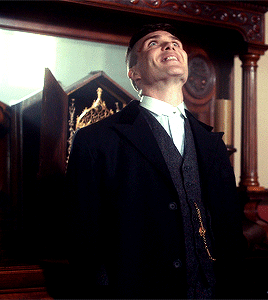
Now the rules are:
Who I will write for:
Jonathan Crane
Neil Lewis
Thomas Shelby
Robert Fischer
Jackson Rippner
Shivering Solider
Tom Buckley
Lenny Miller
Kitten Braden
William Killick
Jim (The Delinquent Season)
Josef Gabcik
Raymond Leon
Emmitt (A Quiet Place: Part 2)
Who I won’t write for:
Cillian Murphy
Robert Oppenheimer
Characters that I haven’t seen yet. The list will change cause i’m binge watching Cillian’s movies lol.
What I will write:
fluff
angst
smut
Any gender reader
basically anything
Remember this is my first time writing so please be nice lol.
#cillian murphy#jackson rippner#peaky blinders#robert fischer#tommy shelby#jonathan crane#shivering soldier#raymond leon#cillian murphy smut#cillian fic#jonathan crane x reader#jackson rippner smut#robert fischer x reader#cillian murphy fanfiction#thomas shelby#cillian murphy x reader#cillian x reader#cillian murphy fanfic#cillian murphy imagine
21 notes
·
View notes
Text
Sirene

Alta marea, 1930 ca. | ph., Manuel Alvarez Bravo (1902-2002, Mexico)
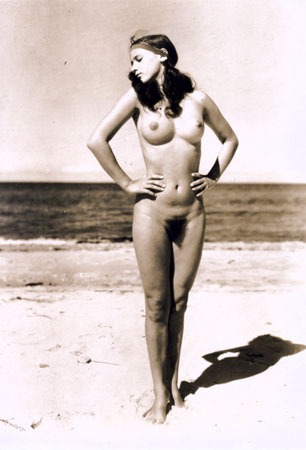
Naked on Beach, 1930 | ph., Gerhard Riebicke (1878-1957, Germany)
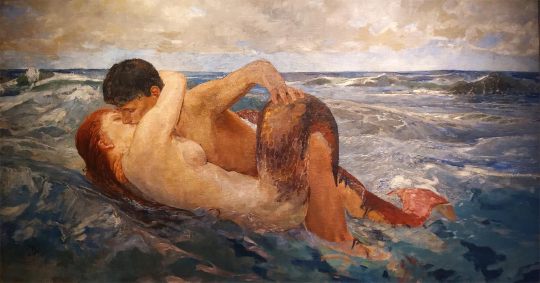
Tritone e Nereide, 1895 (Galleria d’Arte Moderna, Firenze) | Max Klinger (1857-1920, Germany)

Le Sirene, 1870-1910 (Rijksmuseum, Amsterdam) | John Macallan Swan (1846-1910, England)

Swimsuits early 19th century

A nude on the beach | Leopold Schmutzler (1864-1940, Germany)

Girls on the beach, Båstad | Paul Fischer (1860-1934, Denmark)

Sulla spiaggia (On the beach), 1905 | Francesco Gioli (1846-1922, Italia)
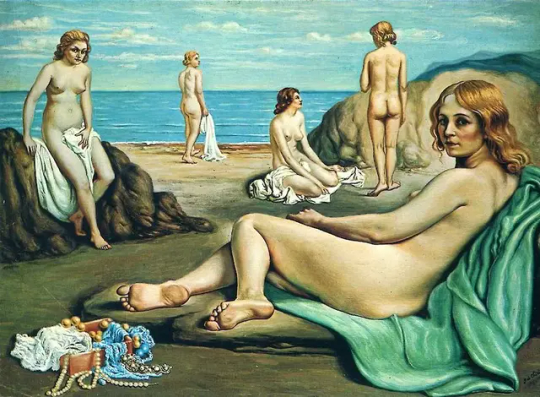
Bagnanti sulla spiaggia (bathers on the beach), Isabella Far, 1934 | Giorgio de Chirico (1888-1978, Italia)
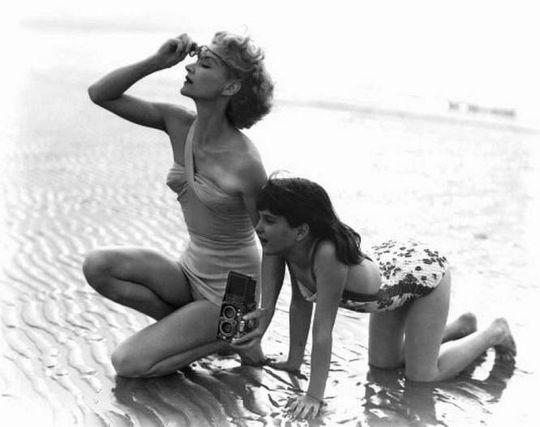
Lisa and Mia Fonssagrives, Long Island Beach, 1946 ca. | ph., Fernand Fonssagrives (1910-2003, France)

The Siren, 1904 | Louis Loeb (1866-1909, USA)

A mermaid, 1900 | John William Waterhouse (1849-1917, UK)

A fantasy of the deep | Arthur Hopkins (1848-1930, England)

Donna del mare (Woman of the sea) | Plinio Nomellini (1866-1943, Italia)

Sirene d'acqua (Water mermaids), 1920 | Josef Wawra (1893-1935, Austria)

Summer on the beach | Paul Fischer (1860-1934, Denmark)
14 notes
·
View notes
Text
While I am aware of the fact that the funding you receive within the system you inhabit must have made you forgetful of what art really is about, I still want to remind you that (fortunately for precarious writers like myself), you are not Literature. Your money is not Literature. S. Fischer is not Literature. Germany is not Literature. And we, the writers, will remember.
Lana Bastašić in response to the cancellation of her upcoming residency and reading at Literaturfest Salzburg and Literaturhaus NÖ by Josef Kirchner and Anna Weidenholzer, January 30, 2024.
5 notes
·
View notes
Text
This poll is based on the definitive ranking of all the characters in the Cillian Murphy Cinematic Universe by @yrli8 and me. Warning: LONG
#cillian murphy#sorry to my mutuals who are not in the cillian murphy fandom#which are all of them lol#polls#on the edge#the delinquent season#anthropoid#batman#breakfast pluto#the wind that shakes the barley#broken#inception#the edge of love#this is the most I have done and will do for any white man smh#original content in quotation marks#mine
17 notes
·
View notes
Photo
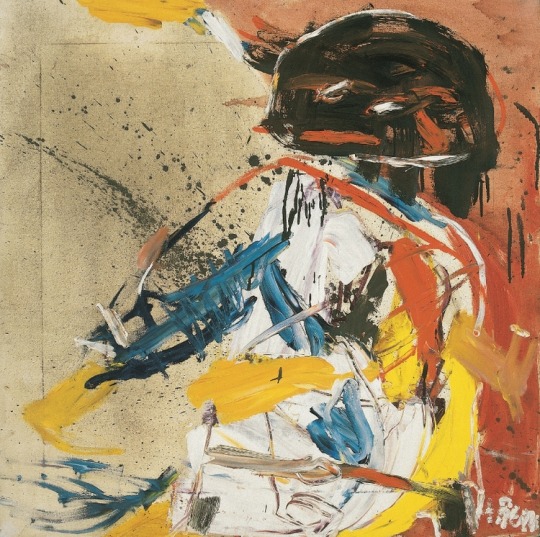

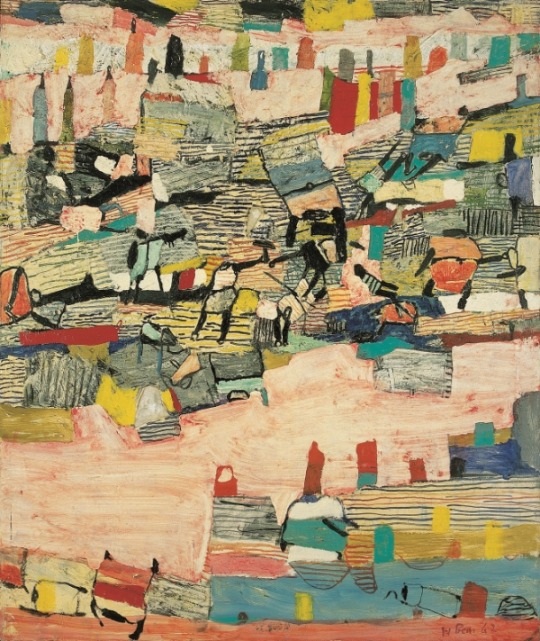

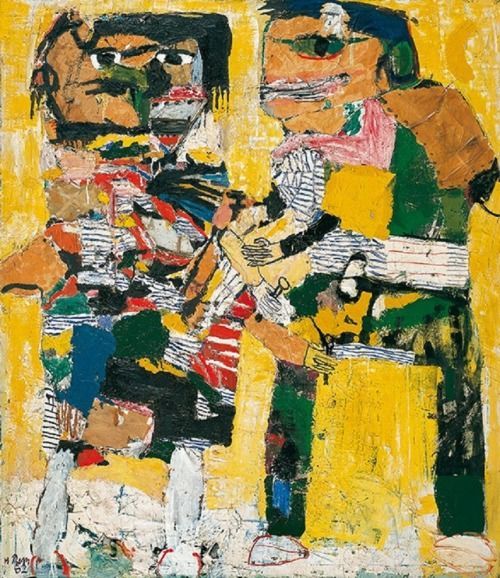
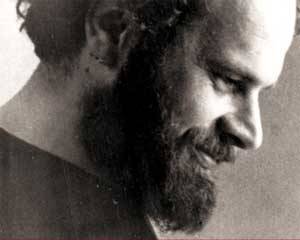
Heimrad Prem (1934 – 1978) was a German painter born in Roding, Oberpfalz. From 1949–1952 he studied decorative painting at Schwandorf, then studied painting with Josef Oberberger and sculpture with Toni Stadler at the Akademie der Bildenden Künste, Munich until 1956.
While studying painting with Ernst Schumacher at the Hochschule der Künste, Berlin, he formed Gruppe SPUR with Lothar Fischer, Helmut Sturm, and Hans-Peter Zimmer. After meeting Asger Jorn, SPUR joined the Situationist International.
In 1960 he won a scholarship of the Kulturpreises im Bundesverband der Deutschen Industrie, Cologne. From 1960–1962 he co-edited the magazine SPUR. In 1961 he visited Oerkelljunga, Sweden with Sturm, Zimmer and Dieter Kunzelmann staying with Jørgen Nash. In 1962 the SPUR group was expelled from the Situationist International, but they continued to work with Nash and others. In 1963 he worked on the SPUR collaborative works: "Canale Grande Crescente" for the exhibition "Visione e Colore" in the Palazzo Grassi, Venice, the SPUR-Bau joint contribution to the exhibition "Nouveaux Espaces", Biennale Paris, and the "SPUR room" in the country house of Willi Bleicher with Munich.
His first solo exhibition in the Galerie van de Loo, Munich was also in 1963. In 1965 the group SPUR fused with Wir to form the group Geflecht (Network). After a short stay in South Sweden, Prem organised the organization of "white celebration" near Munich and began to paint under the influence of drugs.
After his first suicide attempt in 1971 he traveled in Italy, Turkey and Iran. In 1975 he became a joint founder of the artists' community Kollektiv Herzogstrasse. He became a lecturer at the winter academy in the Schloss Kißlegg. In 1976 he had a special exhibition at the Haus der Kunst, Munich. The following year he exhibited in Copenhagen.
Following this, he continued to exhibit work mainly in Germany.Heimrad Prem committed suicide in 1978 in Munich.
https://en.wikipedia.org/wiki/Heimrad_Prem
13 notes
·
View notes
Text
TAG SPOTLIGHT #4 – WERKAUSZUG (OZ)
‘WERKAUSZUG’ (excerpt of works) sums up the variety of the oeuvre of Walter Josef ‘OZ’ Fischer in Hamburg and shows also a broad selection of lesser known signs, drawings and letter combinations in the streets.






0 notes
Text
Old Vienna
Anno 1907

Hotel Kranz heute Hotel Ambassador

Hotel Krantz, heute Hotel Ambassador.
VORGÄNGERBAUTEN
Auf diesem Grundstück standen ursprünglich drei Gebäude. Während Haus A vom Neuen Markt bis in die Kärntner Straße reichte (Hauptfront am Neuen Markt), lagen die Häuser B (zwischen Haus A und Stadt 1053 [ Kärntner Straße 20 ]) und C (zwischen Haus A und Stadt 1044 [ Kärntner Straße 24 ]) in der Kärntner Straße.
Haus A "Zur Mehlgrube"
Die Geschichte dieses Hauses lässt sich bis in die Mitte des 14. Jahrhunderts zurückverfolgen. Damals trug es den Namen "Zu den drei Köpfen" (siehe auch Bei den drei Köpfen). Ab 1453 gehörte es der Stadt, die es neu errichtete und bis gegen Ende des 17. Jahrhunderts als Mehldepot und Metzenleihanstalt (Metzenleihamt) nutzte. Dadurch erhielt es den Namen "Zur Mehlgrube"
1698 wurde es abgebrochen und durch einen Neubau ersetzt, der ebenfalls "Mehlgrube" genannt wurde und dem möglicherweise ein Entwurf von Johann Bernhard Fischer von Erlach zugrunde lag (Baumeister waren Georg Powanger und Christian Oedtl). Darin befand sich das Gasthaus "Zur Mehlgrube". Hier fanden exklusive Bälle für den Adel (Ahnenbälle), aber auch zahlreiche Kinder- und Maskenbälle sowie Musikfeste statt. Später verkehrte in diesem Lokal das Bürgertum, außerdem wurden hier die "Liebhaberkonzerte" abgehalten, bei denen unter anderen auch Wolfgang Amadeus Mozart und Johann Nepomuk Hummel auftraten. Danach wurde es als Casino genutzt und 1866 zu einem Hotel (Hotel Munsch) umgewandelt (ausführlichere Beschreibung dieses Hauses im Artikel Mehlgrube).
Haus B "Zum Glücksrad"
Die erste urkundliche Nennung dieses Hauses stammt aus dem Jahr 1355. Im Jahr 1413 wird zum ersten Mal der Schildname "Zum Glücksrad" genannt. Die Gemeinde erwarb das Haus, das mit einer Weinschankgerechtigkeit ausgestattet war, im Jahr 1696. Es blieb bis zum Abbruch, der zwischen 1850 und 1858 erfolgt sein muss, in deren Besitz. Danach wurde das Grundstück in das Haus A miteinbezogen.
Haus C
Dieses Gebäude wird nur in den Jahren 1453 und 1454 urkundlich genannt. Danach muss es wohl im Mehlkasten (Haus A) aufgegangen sein.
Heutiges Haus
Das heutige Haus wurde 1897/1898 nach Plänen von Franz Kupka und Gustav Orglmeister im Stil italienischer Renaissance erbaut und entstand auf wesentlich verringerter Grundfläche. Die eleganten Räume des Erdgeschoßes auf Seite der Kärntner Straße wurden als Restaurant genutzt. Eine besondere Sehenswürdigkeit bildete der Majolikasaal im Souterrain, in dem die Wände und die auf Pfeilern ruhenden Kreuzgewölbe zur Gänze mit gemalten und farbigen Majolikaplatten verkleidet waren. Die Baukosten wurden mit 1,2 Millionen Kronen angegeben.
Mit Kaufvertrag vom 10. November 1919 wurde das Hotel, das vorher Josef Krantz gehörte, von der "Hotel Krantz AG" erworben. In den Jahren 1921 und 1922 wurde es vollständig renoviert und mit dem damals modernsten Komfort (interurbane Telefone auf allen Zimmern, Bade- und Toilettezimmer, elektrische Uhren und dergleichen) ausgestattet. Bis zur teilweisen Zerstörung während des Zweiten Weltkriegs hatte das Hotel 105 Zimmer mit 150 Betten. Auch ein Konzertcafé und ein Volkskeller gehörten zum Hotel. An der linken Seitenfläche des Portalvorbaus befanden sich eine elektrisch betriebene Weltzeituhr und darunter ein Wetterkasten (beides wurde im Krieg zerstört und schließlich entfernt).
Zu den Gästen zählten König Albert von Belgien, Königin Elisabeth und König Carol von Rumänien, Carola, Königin-Witwe von Sachsen, König Ferdinand von Bulgarien, Prinzregent Luitpold von Bayern und US-Präsident Theodore Roosevelt, der in Wien mit Kaiser Franz Joseph I. zusammentraf.
Am 12. März 1945 erlitt das Hotel zwei schwere Bombentreffer (wahrscheinlich von 500-Kilogramm-Bomben). Dadurch wurde fast die Hälfte des Baus, vor allem aber der Mitteltrakt bis zum ersten Stockwerk, zerstört. Nach dem Krieg wurde das Haus als Hotel Ambassador neu eröffnet. Bereits im August 1947 standen zwei Drittel der Zimmer wieder in Verwendung. Auch nach 1945 wurden hier wieder Gäste untergebracht, die für Österreich von staatlichem oder wirtschaftlichem Interesse waren. Besonderes Aufsehen erregte der Besuch des Kaisers von Äthiopien, Haile Sellasie, der mit Frau und Tochter hier wohnte

2. 1759-1760, Der Mehlmarkt in Wien, Durchblick gegen Nordosten, rechts die ehemalige 'Mehlgrube', später Hotel Munsch. Gemälde von Canaletto. Kunsthistorisches Museum Wien, Gemäldegalerie
Heute Hotel Abassador

0 notes
Text
Altstadt Ludwigshafen
Altstadt Ludwigshafen am Rhein: Ein Überblick Das Wichtigste in Kürze - Lage: Die Altstadt Ludwigshafen am Rhein liegt im Stadtzentrum von Ludwigshafen, direkt am Rheinufer gegenüber von Mannheim. - Geschichte: Ursprünglich als Fischer- und Handwerkerviertel entstanden, entwickelte sich die Altstadt im Laufe der Zeit zu einem kulturellen und historischen Zentrum. - Sehenswürdigkeiten: Enthält historische Gebäude, Kirchen und Plätze, die Einblicke in die Geschichte und Architektur der Region bieten. - Kulturelles Leben: Heimat von lokalen Geschäften, Cafés und Restaurants, die typische Pfälzer Küche und regionale Spezialitäten anbieten. - Touristische Attraktion: Beliebtes Ziel für Besucher, die das lokale Erbe erleben und die Atmosphäre der historischen Altstadt genießen möchten. Geschichte und Entwicklung Die Altstadt Ludwigshafen am Rhein entstand im Mittelalter und wuchs im Laufe der Jahrhunderte zu einem bedeutenden Handels- und Kulturzentrum heran. Ursprünglich von Fischerfamilien bewohnt, erlebte die Altstadt während der Industrialisierung eine wirtschaftliche Blüte durch den Ausbau des Hafens und der chemischen Industrie in der Region. Sehenswürdigkeiten und Architektur Die Architektur der Altstadt spiegelt verschiedene Epochen wider, von mittelalterlichen Fachwerkhäusern bis hin zu neoklassizistischen Bauten des 19. Jahrhunderts. Zu den herausragenden Sehenswürdigkeiten gehören die St. Josef Kirche, der Marktplatz mit seinem Rathaus und das historische Stadttheater. Kulturelles Leben und Gastronomie Die Altstadt ist bekannt für ihr lebendiges kulturelles Leben mit Kunstgalerien, Musikveranstaltungen und Theatern. Lokale Geschäfte bieten Produkte aus der Region an, während traditionelle Gasthäuser Besucher mit Pfälzer Spezialitäten wie Saumagen und Rieslingwein verwöhnen. Tourismus und Besuchererlebnis Touristen können historische Führungen durch die Altstadt unternehmen, um mehr über ihre Geschichte zu erfahren, oder entlang des Rheinufers spazieren, das einen malerischen Blick auf den Fluss und die Skyline von Mannheim bietet. 5 neue Fragen zum Thema "Altstadt Ludwigshafen am Rhein": - Wie hat sich die Altstadt Ludwigshafen am Rhein im Laufe der Zeit verändert und welche Auswirkungen hatte dies auf die lokale Gemeinschaft? - Welche Maßnahmen werden ergriffen, um das historische Erbe der Altstadt zu bewahren und gleichzeitig modernen Bedürfnissen gerecht zu werden? - Inwiefern spiegeln sich wirtschaftliche Entwicklungen, wie die Industrialisierung, in der Architektur und Kultur der Altstadt wider? - Welche Rolle spielen lokale Veranstaltungen und Festivals für die Förderung des kulturellen Lebens und des Tourismus in der Altstadt? - Wie wird die Altstadt Ludwigshafen am Rhein im Vergleich zu anderen historischen Stadtvierteln entlang des Rheins wahrgenommen und positioniert? Beantwortung der Fragen: Die Altstadt Ludwigshafen am Rhein ist ein dynamisches kulturelles und historisches Zentrum, das im Laufe der Zeit erhebliche Veränderungen durchgemacht hat. Ursprünglich als Fischer- und Handwerkerviertel gegründet, erlebte sie während der Industrialisierung einen starken wirtschaftlichen Aufschwung, der ihre Entwicklung stark beeinflusste. Um das historische Erbe zu bewahren und gleichzeitig den modernen Anforderungen gerecht zu werden, wurden in der Altstadt Maßnahmen ergriffen, die sowohl die Renovierung und Erhaltung historischer Gebäude als auch die Schaffung neuer Infrastrukturen umfassen. Dieses Gleichgewicht zwischen Tradition und Fortschritt ist entscheidend, um die einzigartige Identität der Altstadt zu bewahren und gleichzeitig ihre Attraktivität für Besucher und Bewohner zu erhalten. Die Architektur der Altstadt spiegelt die verschiedenen wirtschaftlichen Entwicklungen wider, insbesondere durch den Einfluss der Chemieindustrie und des Hafenbetriebs. Dies zeigt sich in der Mischung aus historischen Fachwerkhäusern und neoklassizistischen Gebäuden, die das Stadtbild prägen und einen Einblick in die industrielle Vergangenheit der Region geben. Lokale Veranstaltungen und Festivals spielen eine zentrale Rolle bei der Förderung des kulturellen Lebens und des Tourismus in der Altstadt. Sie ziehen nicht nur Besucher an, sondern stärken auch die Gemeinschaftsbildung und das Bewusstsein für das kulturelle Erbe. Events wie Kunstausstellungen, Musikfestivals und traditionelle Märkte tragen dazu bei, das kulturelle Angebot der Altstadt lebendig zu halten und neue Besucher anzuziehen. Im Vergleich zu anderen historischen Stadtvierteln entlang des Rheins positioniert sich die Altstadt Ludwigshafen am Rhein durch ihre einzigartige Mischung aus historischer Architektur, lebendigem kulturellem Leben und einer starken lokalen Identität. Während Städte wie Heidelberg oder Mainz für ihre mittelalterlichen Burgen und Universitäten bekannt sind, hebt sich Ludwigshafen durch seine industrielle Geschichte und seine kulturelle Vielfalt hervor. Diese Fragen und Antworten bieten einen breiten Überblick über die Altstadt Ludwigshafen am Rhein aus verschiedenen Perspektiven und helfen dabei, ein umfassendes Verständnis für ihre Geschichte, Entwicklung und Bedeutung zu entwickeln. Read the full article
0 notes
Text
Der Krieg in der Ukraine vor unserer Haustür und der Krieg in Gaza, der sich zu einem Flächenbrand ausweiten könnte, haben scheinbar nichts mit uns zu tun. Wenn wir die staatsnahen Medien lesen, erfahren wir nur, dass wir die Guten unterstützen sollen. Dafür sollen wir ins Kriegshorn blasen und tatkräftig mit Waffen und Geld helfen. Denn in der Ukraine wird unsere Freiheit verteidigt und Israel kämpft um sein Existenzrecht. Da haben wir als Deutsche natürlich eine ganz besondere Verpflichtung! Aber in der Ukraine geht es nicht um unsere Freiheit, sondern um die globale Hegemonie des Westens, und in Gaza wird nicht das Existenzrecht Israels verteidigt, sondern das palästinensische Volk vertrieben und ermordet.
Wer sich auf einen Meinungsaustausch oder eine diskursive Auseinandersetzung mit der staatlich verordneten Meinung einlassen will, wer an den vorgegebenen "Narrativen" zweifelt oder gar fundiertes Wissen besitzt, das sie widerlegt, wird entweder zum Putin-Troll oder zum Antisemiten. Das macht es der Friedensbewegung heute schwer.
Wettrüsten! Was für ein Unwort! Als ginge es um einen sportlichen Wettkampf und nicht um Totrüsten!
"Deinem Vater sagen sie jetzt: Gegen die Völkermörder. Für die Menschenrechte. Für den Frieden. Unglaublich - er glaubt es." Franz-Josef Degenhard nahm 1996 vorweg, was sich drei Jahre später im Jugoslawienkrieg bewahrheiten sollte. Denn Joschka Fischer begründete als Außenminister das deutsche Engagement bei der Bombardierung Belgrads tatsächlich damit, ein zweites Auschwitz verhindern zu wollen. Und: Viele glaubten ihm! Nun war der Krieg eine humanitäre Intervention, wenig später ein Kampf gegen den Terrorismus.
Dreißig Jahre brutale neoliberale Politik und dreißig Jahre intensiv konzertierte Medienarbeit zeigen Wirkung: Immer wieder wird in die Köpfe gehämmert, dass Kriege, die mit deutscher Unterstützung, mental oder materiell, ideologisch oder mit Waffen geführt werden, ausschließlich der Friedenssicherung dienen. Unglaublich, das wird geglaubt! Und wer etwas anderes behauptet, ist fremdgesteuert oder bestenfalls naiv. Zum Vorwurf der Fremdsteuerung gesellt sich neuerdings der des Paktierens mit den Nazis oder der des Antisemitismus.
Spätestens seit der Corona-Krise wird Protest massiv kriminalisiert, die Meinungsfreiheit immer mehr eingeschränkt, Grundrechte abgebaut. Und das Ganze ist sogar justiziabel und führt im Zweifelsfall zu Strafprozessen.
Frei nach: "Friedensbewegung: Zeit für Gemeinsamkeit" in Hintergrund von Jutta Kausch-Henken in "Hintergrund | 3-4-2024 | Seite 32 ff". www.hintergrund.de
#Friedensbewegung#Grundrechte#Meinungsfreiheit#Protest#Kriege#Medienarbeit#Neoliberalismus#Totrüsten#Wettrüsten#Narrative#Meinung#Meinungsaustausch#Auseinandersetzung#Vertreibung#Ermordung#Existenzrecht#Hegemonie#Freiheit
0 notes
Text
youtube
Frank Martin (1890-1974) - Der Sturm, Act III: II. Vor Prosperos Zelle ·
Simon O'Neill · Thierry Fischer · Andreas Macco · André Morsch · Thomas Oliemans · Roman Sadnik · Robert Holl · Christine Buffle · Dennis Wilgenhof · Ethan Herschenfeld · Josef Wagner ·
Netherlands Radio Choir · Netherlands Radio Philharmonic Orchestra
1 note
·
View note